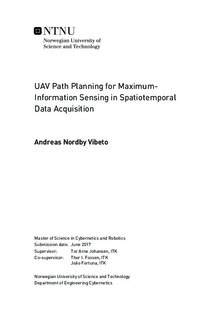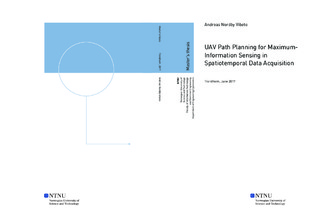| dc.description.abstract | Fixed-wing Unmanned Aerial Vehicles are extensively used for ground observation, as they allow for effective and precise methods of collecting information. They do however, have a downside as the quality of the information gathered depends on the attitude of the aircraft. There is a coupling between the sensor and the aircraft attitude states, which is usually decoupled by mounting the sensors to a gimbal which increases the weight of the payload. This paper investigates a control method that seeks to minimize the negative effect of this coupling when using a hyperspectral pushbroom camera fixed to the aircraft body to survey a ground path. This will be done by developing an offline intervalwise Model Predictive Control algorithm that seeks to minimize the distance between the camera centre point and the pre-defined ground path that is to be observed. As this is an offline method, it is intended to be executed before the flight is initiated. The algorithm is implemented using C++ and the ACADO Toolkit, and the optimized paths will be simulated using a software-in-the-loop simulator. The application developed is able to optimize both curved and piecewise linear paths. It is able to optimize curved 90 degrees turns with radius of 50m, and also 180 degrees turns with a radius of 200m. The sharpest linear corner it is able to optimize is 45 degrees. When optimizing longer paths consisting of several turns, the application proves not to be robust enough to handle turns that are positioned close after one another. On the other hand, long straight lines connecting turns is a disadvantage for the application as well, as it does not seek to position the aircraft straight above the ground path. The application is that it is very time consuming, one second of flight time can take almost 150s to calculate the optimized solution. Simulations show that tracking the optimized path can give observations of the ground track with a mean error below 5m, and that the optimized path results in a slightly more precise tracking of linear paths compared to curved paths. | |

